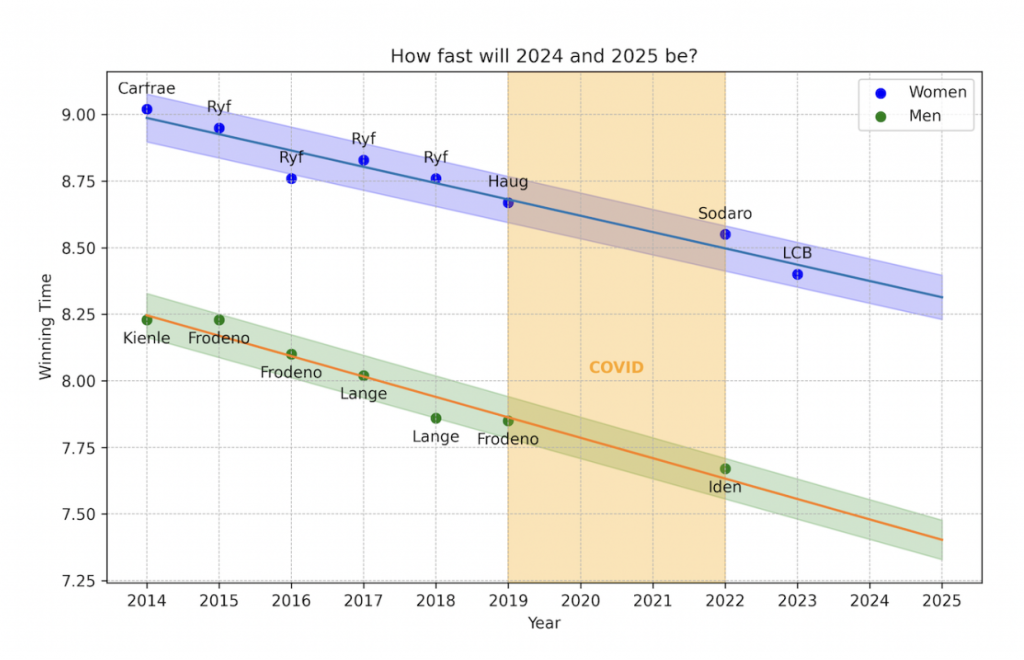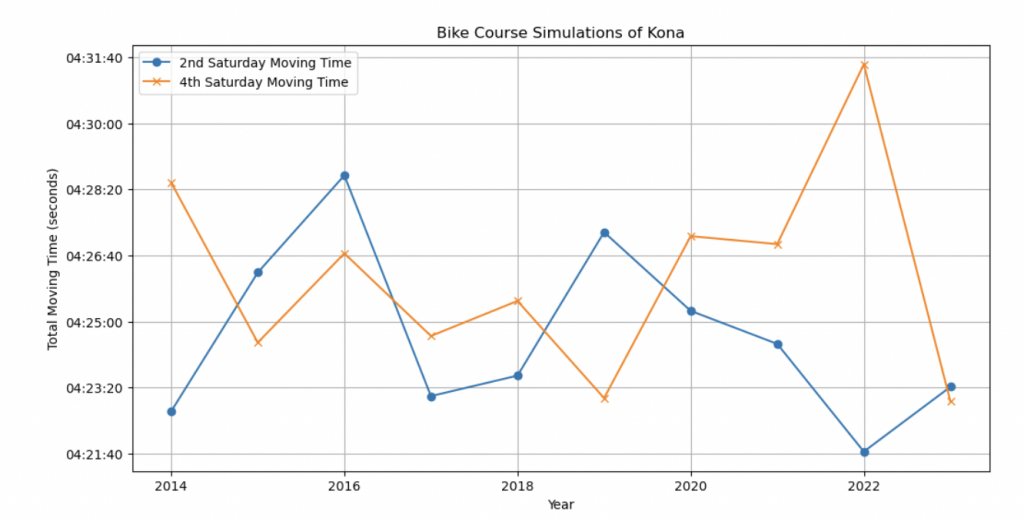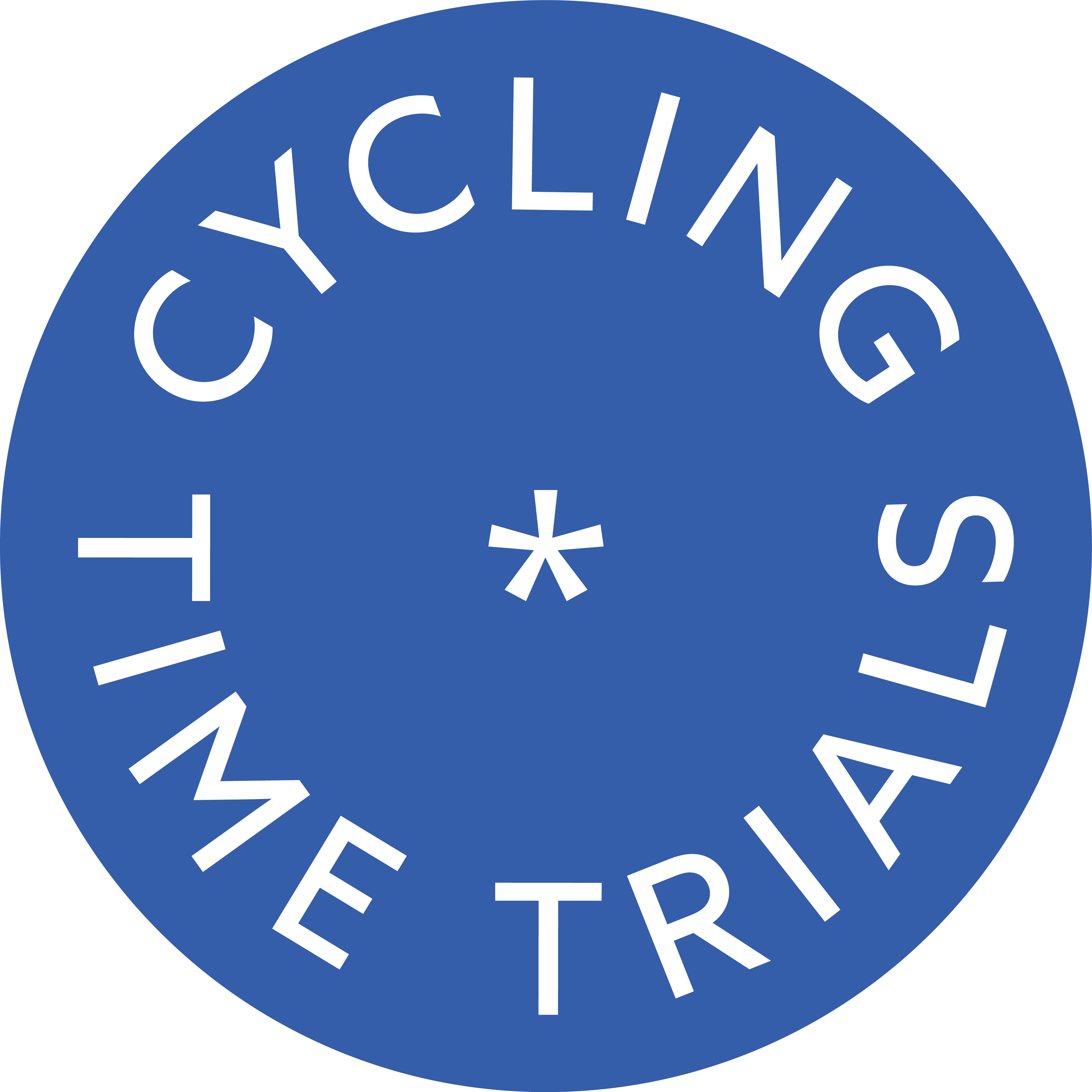The pandemic was an interesting period for endurance sport – we all had nothing to do other than ride Zwift, do time trials and ride alone. This was the same for the professional triathletes who had no racing for the best part of a year. When we came back from the pandemic, tentatively in 2021 and then more comprehensively in 2022, times started getting faster and, as is often the case with endurance sports, eyebrows got raised.
Given the history of endurance sports, the eyebrow raising was probably justified and a healthy amount of scepticism keeps sport honest (ish). The question was, given the gap in time, was the extra scepticism warranted? For this example, we will use IRONMAN World Championships in Kona for two reasons, firstly, it’s on the same course every year which is obviously not the case for something like Le Tour du France which makes performances more comparable – especially when we can normalise for the weather conditions which we’ll have a go at later. Secondly, I just really like triathlon and often use this blog to look into stuff that interests me and hope myWindsock users also share my esoteric interests.
The first step is just to take a look at the Kona times since 2014 (because that’s as far back as IRONMAN publish race results without me having to look really hard) and just draw a line through them to today (a straight line because it works pretty well) and see if any of the performances jump out at us…

Going forward, the times will probably continue getting faster. In 2024 the men are in Kona (and the women in Nice due to some post pandemic location shuffling) and it’s likely that, in order to win this race, someone will have to go under 7 hours and 30 minutes for the first time.
They’ve moved the date of Kona a bit over the years – is that why times are getting faster?
Good question reader. I checked, broadly no but there’s one outlier – the Men’s race this year (2024) is on the 26th of October – as late as it’s been for some time (maybe ever?) and I wonder what difference this might have on the conditions. The 26th of October is the 4th Saturday of the month and traditionally, Kona has been on the second Saturday. Will these two weeks make a big difference?
In general, Kona tends to experience trade winds, which are typically stronger in the summer months (May to September) and weaker in the winter months (October to April). Therefore, October might have lighter winds compared to the preceding summer months, but it can still experience occasional windy days, especially in the afternoon. This means, the famous cross winds on the Queen-K might be a bit gentler this time round as the race is later. Let’s have a look though…

Broadly speaking, the answer to our question is no. The trend of races getting faster is not much to do with the weather. It’s probably due to materials, decreases in resistance due to aerodynamics, faster tyres and other things.
The upshot
In 2024, to win the Ironman World Championships in Kona (only the men are racing) you’ll have to finish in sub 7:30 according to the trend that appears to be in place. If you add up all the current records for individual disciplines and add very quick transitions we get sub 7:30. The likelihood is we will see a sub 4 hour bike split if the weather plays ball. By 2030, sub 7 might well be on the cards. One day, we will look into what that might take.

 UK Time Trial Events
UK Time Trial Events




